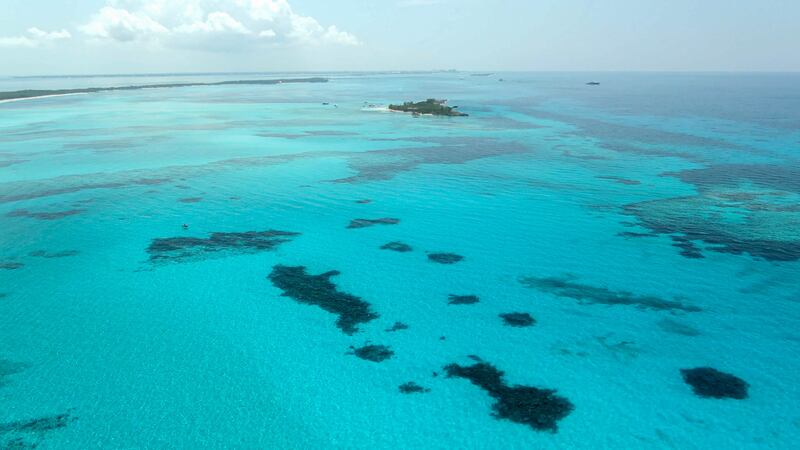Scientists including researchers from Trinity College Dublin have discovered the largest seagrass ecosystem in the world with the help of tiger sharks.
It covers a vast area in the Bahamas estimated to be up to 92,000 km² and acts a giant carbon sink.
An innovative approach was taken by an international team of researchers with tiger sharks playing a key role in mapping and ultimately validating the main findings.
Published on Tuesday in Nature Communications, it is regarded as one of the most important marine discoveries of the past decade.
Seagrass ecosystems play an increasingly recognised role in supporting ocean health. They promote biological productivity, ocean biodiversity, fishery resources and carbon sequestration, while protecting shorelines from storms.
Seagrasses trap and permanently store large amounts of organic carbon – known as blue carbon – in their sediment, and provide a nature-based solution to mitigating climate change effects. Tropical seagrass meadows are kept healthy by tiger sharks, which, as the top predators in these ecosystems, prevent overgrazing by sea turtles, dugongs, manatees and other herbivores.
Assistant professor in Trinity’s School of Natural Sciences Nicholas Payne and PhD researcher Lucy Harding were part of the research team and helped deploy the video cameras on the tiger sharks.
“This is an exciting and important discovery for a range of reasons. Here in Ireland, we have a huge coastal area that likely supports significant seagrass ecosystems. However, as is [the case in] the Bahamas, we don’t have a great understanding of their distribution and extent,” he explained.
“It’s important that we now put more research effort into mapping these crucial habitats, especially so we can design the best ways to conserve them,” Dr Payne added.

Dr Carlos Duarte of King Abdullah University of Science and Technology, Saudi Arabia, said it was known the Bahamas had an extensive seagrass ecosystem, but the true size had never been properly quantified because surveying the vast area remains challenging. “Seagrass meadows cannot be readily mapped from space, as they yield signals similar to those of seaweed and are often covered by carbonate deposition, which returned a glare – backscatter – similar to that of bare sand.”
To map the total area the team led by US NGO Beneath The Waves performed their own remote sensing analysis, while integrating previous satellite imagery estimates to generate a composite estimate of the Bahamas seagrass ecosystem.
Working with tiger sharks enabled even more seafloor to be mapped, with the team attaching video cameras to the sharks as they swam throughout the Bahamas Banks.
“Tiger sharks spend about 72 per cent of their time patrolling seagrass beds, which can be observed by the 360-degree cameras we deployed – [used] for the first time in marine animals – on the sharks,” Dr Duarte added.
“This provided an opportunity to expand ground-truthing across the vast, challenging depths of the Bahamas Banks, as tiger sharks cover about 70km in one day, can work with us 24/7 – with no complaint yet on record – and are not constrained, as human divers are, to shallow depths.”
This first-time partnership between tiger sharks and scientists provides a model for collaborating with large marine animals to explore the ocean.
The research team also collected sediment cores from the extensive seagrass ecosystem, to evaluate how much carbon is stored in the sediment, ultimately revealing that The Bahamas likely holds up to 25 per cent of the global stock of seagrass-based blue carbon.
“This discovery should give us hope for the future of our oceans,” says Dr Austin Gallagher from Beneath The Waves.
“It also demonstrates how everything is connected. Because tiger sharks had been protected in The Bahamas for many years, we were able to study and monitor the ancient processes these animals had been engaged in for millenniums. The sharks led us to the seagrass ecosystem in The Bahamas, which we now know is likely the most significant blue carbon sink on the planet,” he noted.
If protected, these seagrasses could play a crucial role in slowing the climate emergency, as the world moves to deploy a diverse range of strategies to capture carbon from the atmosphere, Dr Gallagher added.





